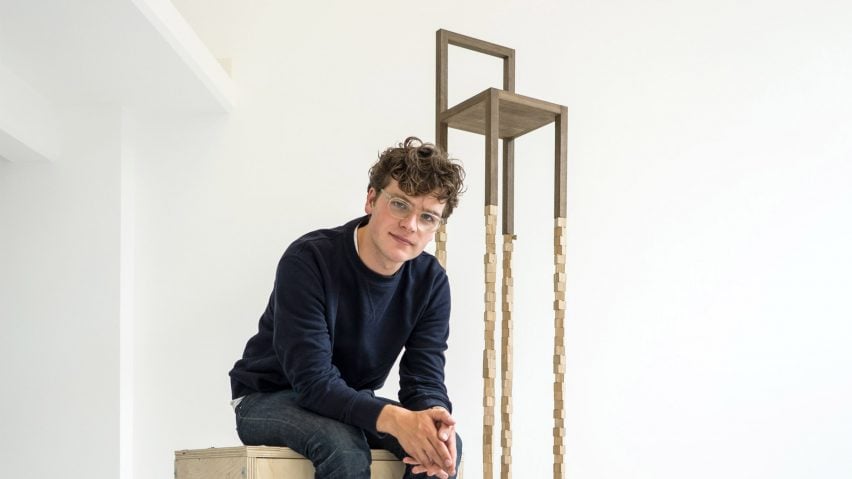
The Urge To Sit Dry is a chair by Boris Maas that rises with the sea level
This chair raised on blocks aims to tackle the "stupidity of the unawareness of the upcoming disaster" of climate change for countries where water levels could threaten everyday life.
Created by Design Academy Eindhoven graduate Boris Maas, The Urge To Sit Dry is a smoked-oak chair based on archetypal designs, raised on blocks of lighter European oak.
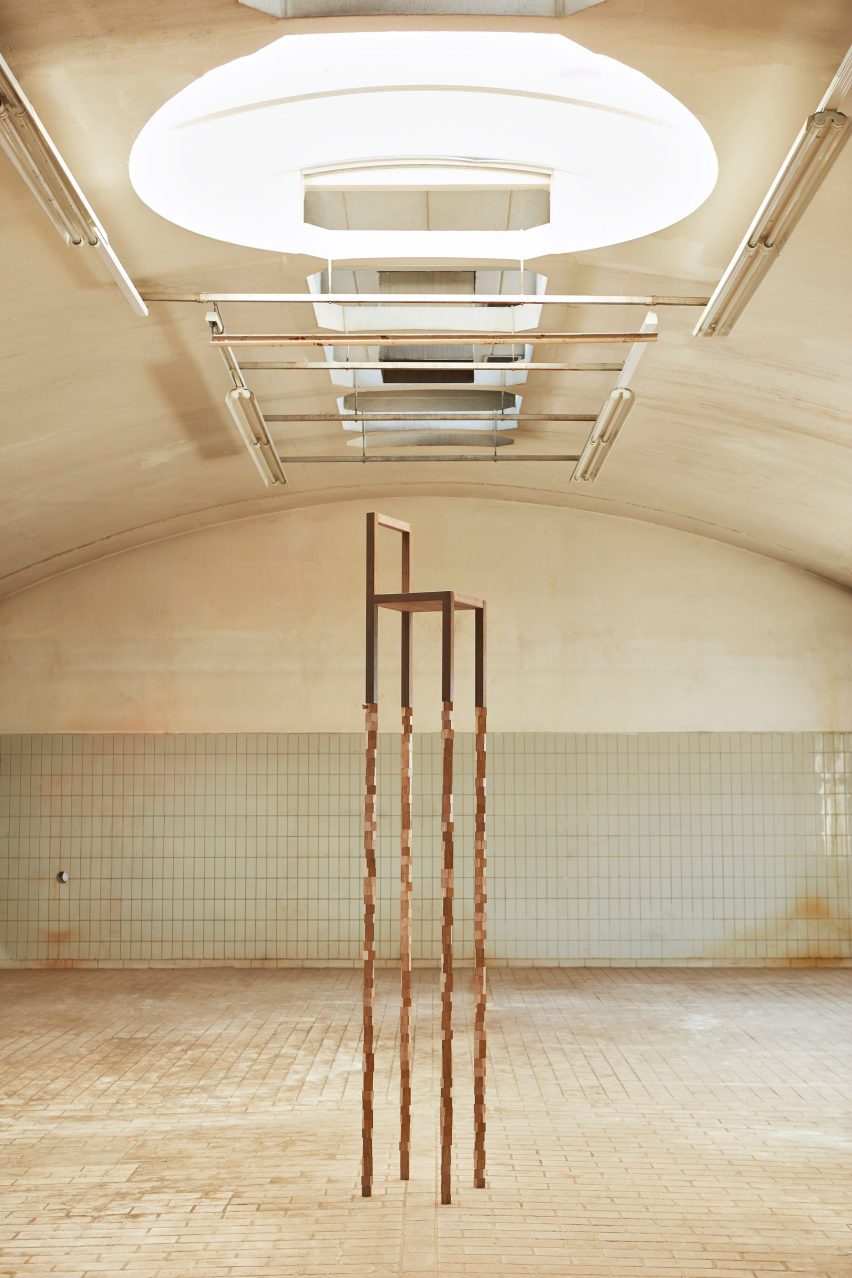
The blocks lift the chair to the height it would need to be to sit above the sea level in different scenarios.
The design of the chair means it can be easily adapted to reflect the levels of different places and also to show the impact of a potential rise in sea levels due to global warming.
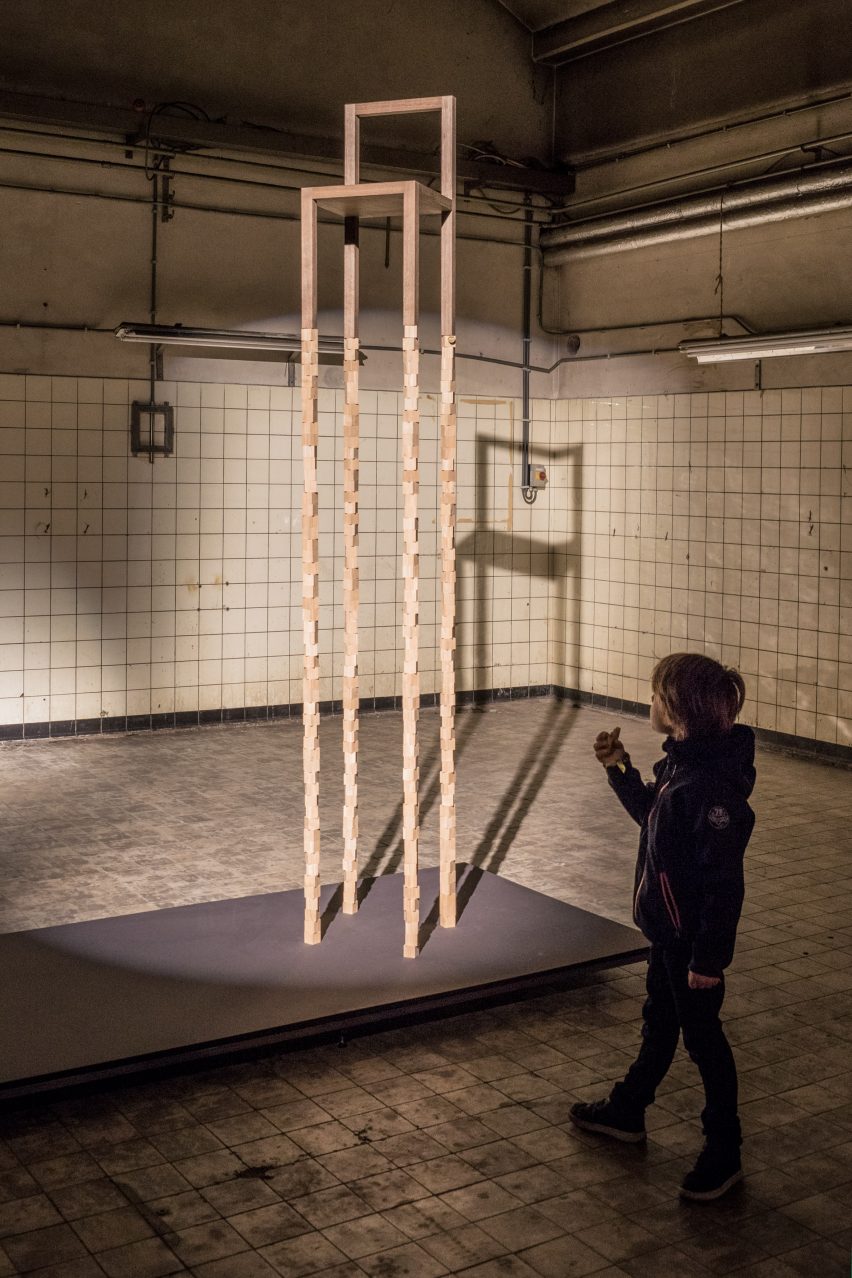
The first example – shown at the Design Academy Eindhoven 2018 graduate show in October during Dutch Design Week – is calibrated for Maas' hometown of Rotterdam, which is 90 per cent below sea level.
"This chair illustrates the need to stay safe in lower-lying regions," said Maas. "The unusually tall chair legs lift you above the tide, constructed out of blocks stacked in an act of panic."
"It stretches the imagination of the observer to the possibility of living on extensions," he added.
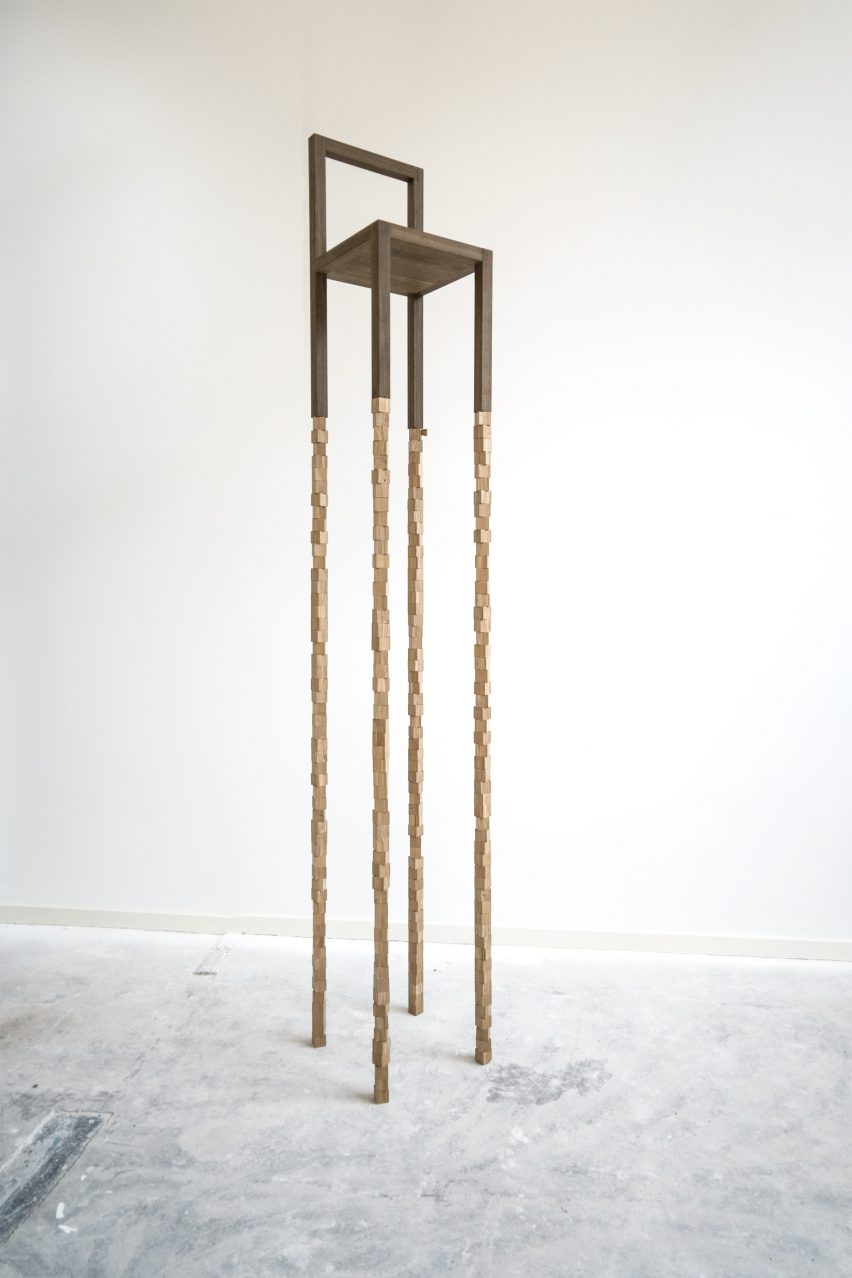
A brass marker is mounted on one of the chair's back legs, mimicking the plaques usually placed on walls and buildings in the Netherlands to mark the difference between the current land height and the sea levels.
Maas said the idea for the chair came from an initial desire to tackle global environmental issues that many people were aware of but struggled to connect with.
"Why can't we do something about the endless stupidity of the unawareness for the upcoming disaster like climate change?" he asked.
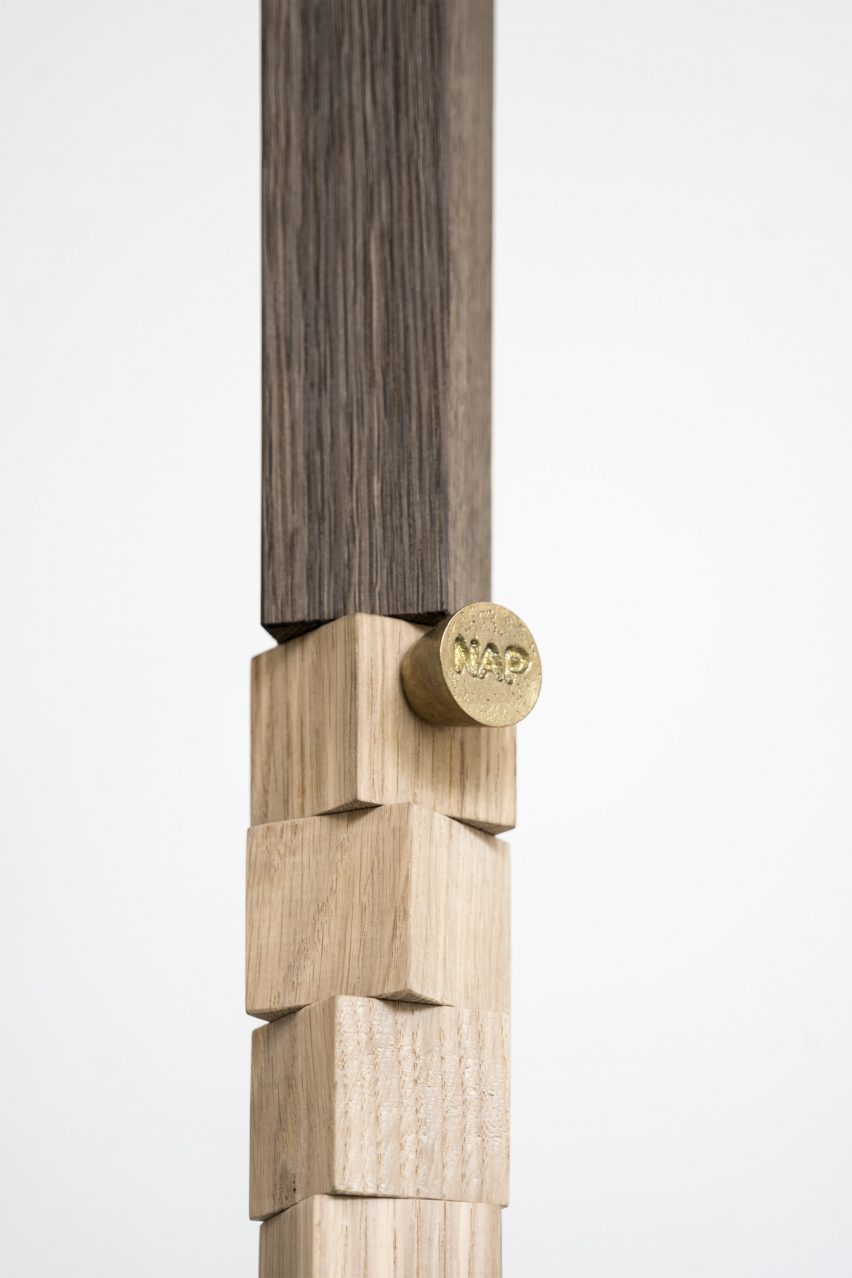
A recent report by NASA found that sea levels have been rising faster in recent decades, rather than increasing steadily due to increased melting in Greenland and Antarctic.
It predicted that levels could rise by as much as 65 centimetres by 2100, with major implications for coastal communities and countries where water plays a key role in the use of land and the economy, like the Netherlands.
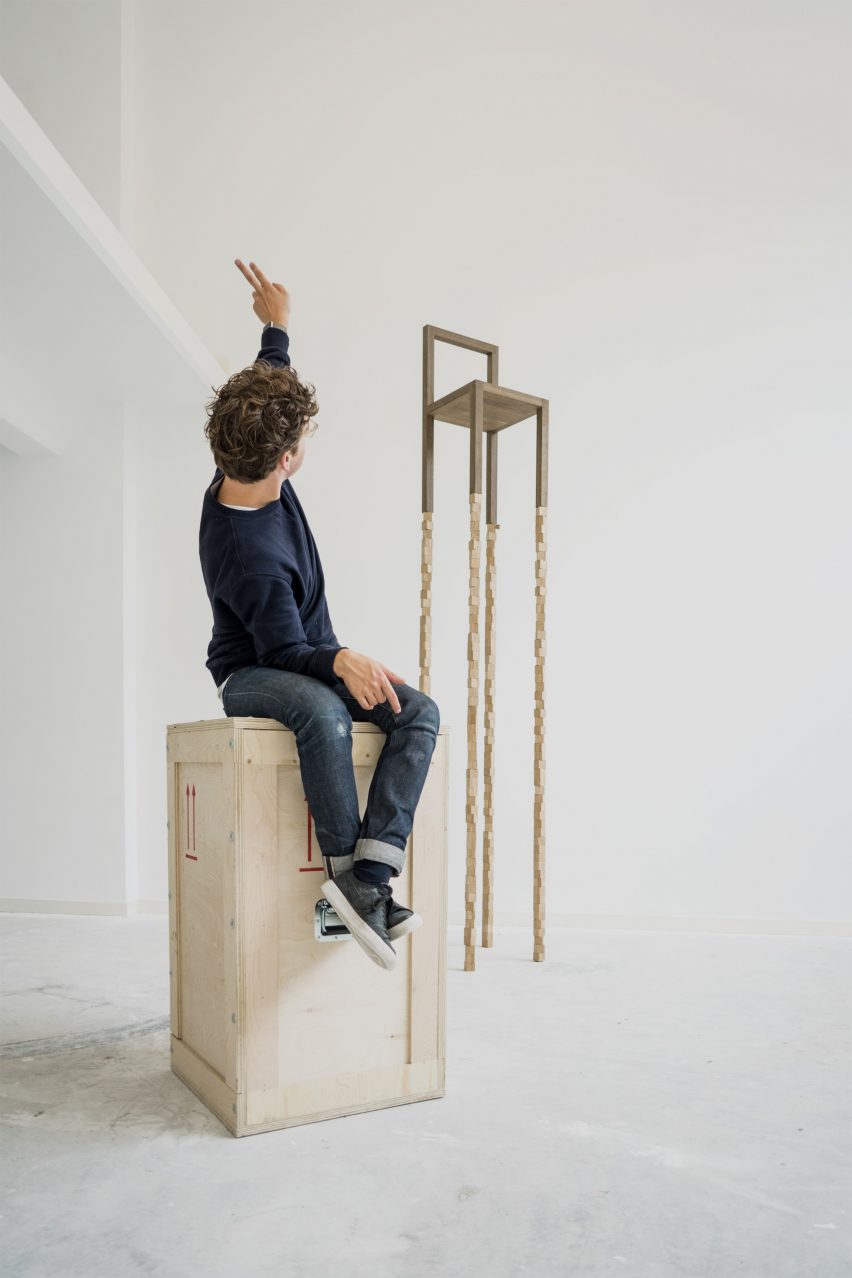
"As a collective heritage in the Netherlands, we all have memories of the flutings that have left a scar on our landscapes, cityscapes and minds," said Maas. "This demonstrates the fragile relationship between people and water."
In January, a Google Earth plugin called Surging Seas: Extreme Scenario 2100 was released to allow users to see what America's coastal cities would look like if sea levels rose by eight feet.
Earlier this year a research paper put forward the idea of Climate Gentrification, which would see wealthier people moving into urban areas less susceptible to flooding, changing the dynamic of entire cities.